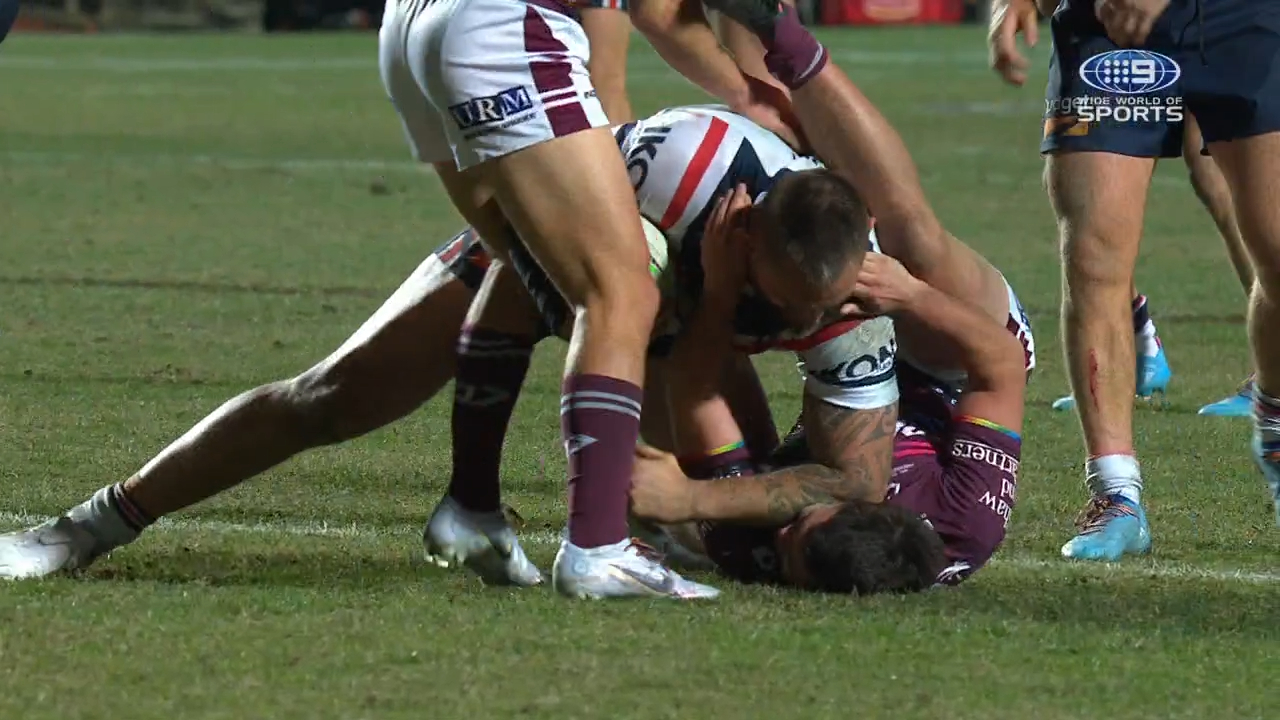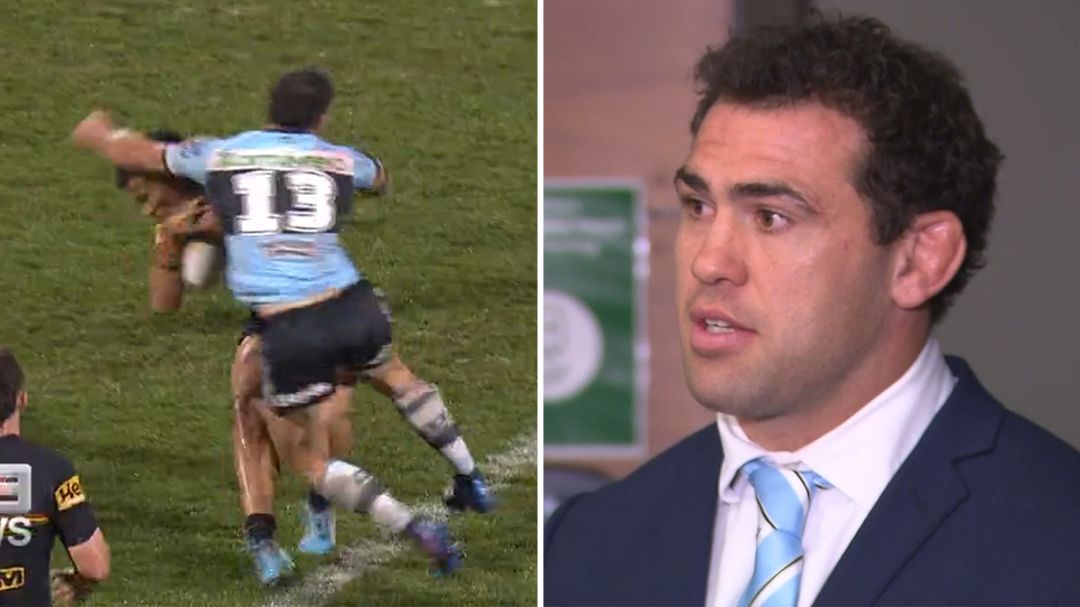The NRL’s match review committee has offered a rare explanation for the decision to not charge Melbourne prop Nelson Asofa-Solomona for a suspect act on an opponent.
There’s been outcry since the Storm behemoth appeared to drive his elbow and forearm into the face of Warriors hooker Wayde Egan in Auckland on Friday night.
Egan lay injured on the ground for several minutes as a result of the incident, and left the field clutching his jaw.
EXCLUSIVE: Paul Gallen says NRL penalty inconsistencies are ‘laughable’
READ MORE: Blunder ruining ‘poor’ million-dollar NRL star
READ MORE: Emma McKeon surpasses swimming royalty for record
Several of his teeth were busted as a result of Asofa-Solomona’s act, but on Saturday the MRC charge sheet did not feature the incident, despite it being penalised and reported at the time.
Making the decision more confusing was the fact Roosters prop Jared Waerea-Hargreaves was charged and fined for a similar incident on Manly debutant Zac Fulton on Thursday night.
NRL legend Andrew Johns called the decision not to charge Asofa-Solomona “laughable”.
“To me, that’s four months’ suspension,” Johns said on Nine’s Sunday Footy Show.
Stream the NRL premiership 2022 live and free on 9Now
“Honestly? Nothing for that, or a fine? There was nothing but intent to hurt (Egan). That’s what it was.”
On Monday, MRC manager Luke Patten released a short video explaining how his five-person committee reached the decision that the Asofa-Solomona action was unworthy of a charge.
“We identified that there was an extra player – (Felise) Kaufusi – contributing to the force of the tackle, so two big men on a smaller man,” Patten said.

“We identified that Nelson creates space so there is no crusher and no force applied to Egan’s neck. There was a couple of other things we had to clear – first the head slam; we see there was clear separation from Nelson’s right arm as player Egan gets thrown to the ground. Nelson has a good grip with his left arm but there is clear separation, whereas in a head slam you would see that arm isolate the head and really slam it into the ground, so we cleared that.
“Secondly was the dangerous contact aspect… in one of the back angles you can see Nelson gets a grip under Egan’s left arm, and we believe Nelson’s right arm was diagonal from that grip, across his chest.
“There might be possibly minor contact at the end of the tackle with Nelson’s forearm to the neck and chin area, but that was a minor contact. It was a forceful tackle which unfortunately results in Egan’s head going into the ground.”
NRL’s head of football Graham Annesley was at pains to reiterate the MRC acts independently from the governing body, and so the finger can’t be pointed at his department.

But Annesley was pressed by journalists on a supposed disconnect between the game-day match officials, the MRC, and the NRL judiciary – which is again an independent body.
The Asofa-Solomona controversy comes a week after Cronulla forward Dale Finucane was banned for two games for an accidental head clash, which injured the ear of Penrith centre Stephen Crichton.
Annesley was asked why Finucane was penalised for failing to show a “duty of care”, while Asofa-Solomona is unpunished for an act that badly damaged a player’s face.
“They saw it as a very physical tackle, but a lot of tackles in our game are very physical,” he said of the Asofa-Solomona incident.
He was also asked to explain how the Asofa-Solomona incident was different to the Waerea-Hargreaves one.
“A very different type of video evidence that was available to clarify that incident. It depends on the circumstances, it depends on the clarity of vision that is available,” Annesley said.

“The number of camera angles is very similar in every game. It’s more about the clarity… sometimes things get captured better, it’s more open, you don’t have as many players around (the incident).”
On the suggestion of a disconnect specifically, Annesley said the system was designed so player penalties could be handled independently from the NRL itself.
“What we are trying to have is a system devoid of administrative intervention, and is effectively – to put it in legal terms… it’s allowing players natural justice,” he said.
“My staff could probably look at it and say, ‘oh that doesn’t look too good, let’s charge that’, but that’s the administration doing it, it’s not independent, it doesn’t have the benefit of former players and former referees… all having their own perspective.
“No one at the NRL expects everyone is going to agree (with their decisions), just as not everyone will agree with what happens on the field… but it’s the process that is important, it’s the independence of it, it’s allowing natural justice to take place.”
For a daily dose of the best of the breaking news and exclusive content from Wide World of Sports, subscribe to our newsletter by clicking here!

